financing SFM

Share
Related Links
Biodiversity Offset Users Guide
Mozambique Biodiversity Offsets Roadmap (PDF October 2016)
A National Biodiversity Offset Scheme: A Road Map for Liberia's Mining Sector
Balancing biodiversity wealth and mining interests in Liberia
Economic Growth and Drivers of Deforestation in the Congo Basin
Trouble in the forest seen through the eyes of orphan bonobos
Balancing Mining Development and Forest Conservation in the Congo Basin
Attachments
OFFSETS-PUBLIC INFORMATION NOTE_1.pdf
Authors/Partners
World Bank Africa Region
Biodiversity Offsets Toolkit and Sourcebook
CHALLENGE
In many African countries, native forests are under pressure from rapidly-spreading roads, dams and other infrastructure, as well as the allocation of large forest areas to mining, commercial agriculture, and other non-forest uses. Biodiversity offsets are one of the tools available to address such pressures. Offsets can be used to strengthen protected areas of similar or greater conservation value than the area lost to specific projects. The driving impetus for such offset schemes is usually biodiversity protection, although the associated conservation areas provide additional ecosystem services such as soil and water conservation, flood mitigation, and habitat for sustainably exploitable fisheries. In an era of often flat -- and sometimes declining -- governmental support for forest conservation in general and protected areas in particular, biodiversity offsets provide an underutilized opportunity to mobilize substantial new funding from public infrastructure accounts as well as the private sector.
Biodiversity offsets are not a panacea, nor are they always the best tool available for achieving forest conservation. As part of the “mitigation hierarchy” underpinning the World Bank’s Safeguard Policies and the IFC’s Performance Standards, offsets are considered a last resort, after efforts to avoid, minimize, and restore any significant damage to forests or other natural habitats. Nonetheless, given that many infrastructure, extractive, and other large-scale projects have an inherently large footprint, a biodiversity offset scheme may be warranted (and required by some funding entities).
A key challenge is systematizing and scaling-up biodiversity offsets through a national or other aggregated offset approach in order to overcome limitation like: (i) the high transaction costs often borne by each separate project; (ii) sub-optimal selection of conservation offset areas due to uncoordinated, ad-hoc approaches; and (iii) insufficient participation and ownership by governmental authorities in arrangements negotiated primarily between large private firms and conservation NGOs. The cumulative impacts of multiple (including smaller-scale) projects could also be more effectively addressed through an aggregate offset approach.
APPROACH
Under this activity, the team produced a Biodiversity Offsets User Guide containing key information about biodiversity offsets that practitioners should know about, with references provided where readers could obtain further information. Three case studies of reasonably successful biodiversity offsets were added to the User Guide as annexes. The case studies involved two private sector mining projects (in Liberia and Madagascar) and one World Bank-supported hydropower project (in Cameroon). These case studies are intended to show readers how the concepts explained in the User Guide can realistically be applied to achieve positive results on the ground.
In addition, in response to a strong expression of interest from the Government of Mozambique, this activity also provided legal technical assistance for incorporating biodiversity offsets into the Government’s official Environmental Impact Assessment (EIA) process. Two reports were produced: (i) An analysis of Mozambican environmental legislation with respect to the use of biodiversity offsets; and (ii) a draft revision of the actual EIA regulations.
Finally, two pilot Country Roadmaps were completed to assess the potential for large-scale biodiversity offset systems in Liberia and Mozambique. The Roadmaps are intended as preliminary country examinations of legal and regulatory frameworks, national policies, land use plans, financial structures, and other relevant information.
RESULTS
The research team found that multiple detailed publications already exist about the details and controversies of biodiversity offsets, but that a concise reference with practical advice on how actually to do them was still lacking. This is the void that the Biodiversity Offsets User Guide seeks to fill.
The Liberia Biodiversity Offsets Roadmap emphasizes industrial-scale mining. Since adequate funding for Liberia’s protected areas remains a challenge, biodiversity offsets offer the potential for improved financial sustainability. The Liberia Roadmap outlines a series of steps for scaling-up biodiversity offsets in Liberia; among the most important is the establishment of a national Conservation Trust Fund to enable the reliable and transparent transfer of funds from extractive firms to priority Protected Areas. The new Liberia Forest Sector (REDD+) Project, approved in April 2016 with support from the World Bank and Government of Norway, provides a vehicle for moving forward the Roadmap’s key recommendations.
In Mozambique, existing Conservation Areas (CAs) cover about 26% of the country’s land area, and encompass most types of terrestrial and aquatic ecosystems. However, most are seriously underfunded. The Mozambique Biodiversity Offsets Roadmap (also available in Portuguese) proposes using Mozambique’s BioFund to transfer biodiversity offsets funding from infrastructure and extractive industry projects to selected CAs that are ecologically similar to the project-affected areas. Implementation has begun of the Roadmap’s recommendations, through the Government’s recently revised Environmental Impact Assessment Regulations.
For stories and updates on related activities, follow us on Twitter and Facebook, or subscribe to our mailing list for regular updates.
For stories and updates on related activities, follow us on twitter and facebook , or subscribe to our mailing list for regular updates.
Author : World Bank Africa Region
Last Updated : 07-18-2024
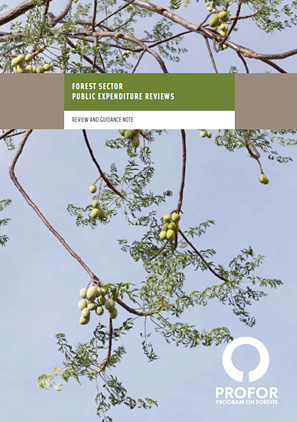
Share
Related Links
Forest Sector Public Expenditure Reviews: Review and Guidance Note
Benchmarking Public Service Delivery at the Forest Fringes in Jharkand (India)
Reforming Forest Fiscal Systems
Attachments
Forest-Sector-PER-review-PROFOR.pdf
Authors/Partners
Martin Fowler with Patrick Abbot, Stephen Akroyd, John Channon, Samantha Dodd (Oxford Policy Management and LTS International).
Forest Sector Public Expenditure Reviews (Toolkit)
Evaluating the effectiveness of public spending in the forestry sector: lessons from global good practices
CHALLENGE
Public expenditures in the forest sector arise from the need to maximize development outcomes and enhance livelihoods, conserve a variety of local and global public goods, set an attractive investment climate to leverage private investment, and contribute to the costs of forest administration. Yet the sector is typically poorly funded in most developing countries.
Lack of adequately qualified staff, lack of funds to carry out essential supervisory operations and lack of equipment are symptoms of ineffective budget planning and allocation. Poorly paid staff have few incentives to execute their duties responsibly and may be tempted to indulge in corrupt and illegal practices. In the end, mismanaged forests compromise development and environmental goals.
APPROACH
Sectoral public expenditure reviews can help diagnose spending problems and help countries develop more effective and transparent budget allocations that promote growth and reduce poverty.
To ensure that sectoral reviews are based on effective tools (tracking surveys, citizen report cards, etc) and translate into successful policy and spending reforms, PROFOR commissioned a stock-taking of public expenditure reviews in the forests sector. The authors examined global best practice examples from other sectors and made recommendations based on this analysis.
The guidance note covers the issues to be considered during the preparation phase of a forests sector PER, and in drawing up the Terms of Reference (an example ToR is provided), the analysis that should be contained within the report, and a proposed structure for the report.
FINDINGS
The review finds that, globally, very few forest sector PERs have been undertaken to date. Of the 61 PERs reviewed, only 14 focused to any degree on forestry. Of these, 11 were part of an FAO programme of sustainable forest development, where the principal focus was on aspects of forest revenue, with only limited analysis of sector expenditures.
The principal findings of the review of PER literature are as follows:
- The definition of ‘forestry’ and the ‘forest sector’ differs considerably between studies.
- There are considerable inconsistencies between policy priorities and planned budget allocations to the forest sector.
- Data problems were a common feature of the PERs.
- In almost all of the cases reviewed, only a small proportion of the national budget is allocated to the forest sector.
- Many of the PERs reveal low disbursement rates against approved budgets.
- The importance of NGO expenditure and involvement in the forests sector is understated.
- Capital investments are undertaken without consideration of the associated recurrent spending requirements to adequately maintain these investments.
- Operations and maintenance (O&M) funding in forestry departments is inadequate.
- Few attempts have been made in the PERs reviewed to link public sector expenditure to outcomes.
- There is limited analysis of the efficiency and effectiveness of forestry expenditures.
RESULTS
PROFOR and Oxford Policy Management hosted a half-day workshop on December 14, 2010, in Washington DC. The objective of the workshop was to present the initial findings from the Forest PER survey, to discuss some of the best practices which have emerged from this review, and to seek wider feedback about the utility of the draft guidance note, and how it can be made more useful to sectoral practitioners. The review and guidance note were finalized in January 2011 and published formally in July 2011.
In a second phase, individual countries will customise the guidelines to meet their specific requirements and experiences with piloting the guidelines will be used to revise the guidance note.
For stories and updates on related activities, follow us on twitter and facebook , or subscribe to our mailing list for regular updates.
Author : Martin Fowler with Patrick Abbot, Stephen Akroyd, John Channon, Samantha Dodd (Oxford Policy Management and LTS International).
Last Updated : 06-16-2024
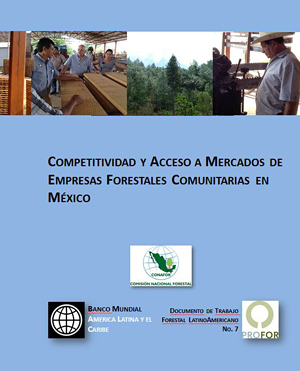
Share
Related Links
Competitividad y Acceso a Mercados de Empresas Forestales Comunitarias en Mxico (junio 2013 PDF)
Strengthening the Value Chain for Indigenous and Community Forestry Operations
Attachments
Guia_para_la_evaluacion_economica_y_financiera_de_proyectos_forestales_comunitarios_en_mexico_1.pdf
MX PROFOR- Competitiveness Report_1.pdf
Authors/Partners
World Bank Latin America and Caribbean Region, CONAFOR, Frederick W. Cubbage, Robert R. Davis, Gregory E. Frey and Diji Chandrasekharan-Behr
Community Forestry Enterprise Competitiveness and Access to Markets in Mexico
CHALLENGE
About one-third of Mexico’s land area is covered by biodiversity-rich native forests, two-thirds of which are considered to have commercial potential. Despite the biological riches and commercial potential, almost 55% of forest-dependent communities are extremely poor. Particular to Mexico, some 80% of forests are owned by indigenous and other communities, giving forest land ownership a strong social nature. Yet Mexico’s forest resources are far from meeting their potential for alleviating poverty and contributing to local development and the national economy. While the Government of Mexico is extremely concerned about conserving the nation’s forest resources and using them sustainably, the forest sector policies and programs do not fully reflect the unique tenure structure of the forests.
Meanwhile, in the last 25 years, numerous Mexican forest communities have managed to develop reasonably successful, commercial community forestry enterprises based on timber and non-timber products. Some of these are among the world’s most advanced examples of commercial community forestry. The large majority of forest communities, however, run less-advanced forest businesses.
APPROACH
While much analysis has been done in the last few years on the economics of community forestry in Mexico and its potential to be competitive, most of this work has been done in isolation from critical stakeholders and has fallen short of generating coherent dialogue and the consensus required to reorient public policy in support of CFEs.
In order to help inform Mexico’s forestry priorities, internal policies, and programs in support of community forestry competitiveness, this activity aimed to develop consensus (through a stakeholder-driven process) on the key constraints and policy actions required to position Mexico’s community forestry sector as a high-value provider to niche markets from sustainably managed community forests, delivering both income and biodiversity protection.
In a two-phased approach, the project would first:
- create a stakeholder participation framework and develop ownership among key stakeholders on the process, outputs and outcomes
- integrate external partners into the process and synthesize their work in this area
- carry out diagnostics and analysis needed to agree upon the priority products and value chains, and
- characterize the current policy and incentive framework of the community forestry sector.
Next the activity would conduct the in-depth analysis needed to develop specific policy, incentive, and public expenditure recommendations to the Government of Mexico and the National Forestry Commission (CONAFOR) to enhance the competitiveness of community forestry.
RESULTS
- Guidelines for financial and economic evaluations for community forestry (Spanish and English versions).
- Training material for financial and economic evaluations for community forestry (Spanish).
- Non-market valuation of forest goods and services: Training presentation (Spanish)
- Toolkit for data capture for community forestry for financial and economic evaluations including: (i) data capture guidelines (Spanish); (ii) data processing spreadsheet (Spanish), and (iii) data capture survey (short and longer version in Spanish)
- Capacity building services to CONAFOR and private and public stakeholders provided to date are: (i) Stakeholder workshop (Nov. 2010); (ii) Stakeholder workshop (July 2011). Data collection training (Mar 2012).
- Financial analysis of 30 selected representative community forest enterprises -- now available in Spanish. The survey touched on topics such as: land equivalent values, profitability of CFEs, forest management, harvesting, sawmills, economic incentives, payments for environmental services, etc.
For stories and updates on related activities, follow us on twitter and facebook , or subscribe to our mailing list for regular updates.
Author : World Bank Latin America and Caribbean Region, CONAFOR, Frederick W. Cubbage, Robert R. Davis, Gregory E. Frey and Diji Chandrasekharan-Behr
Last Updated : 06-16-2024

Share
Related Links
Supporting Small and Medium Forest Enterprises -- A Facilitator's Toolkit (April 2012)
Appuyer les petites entreprises forestieres: Bote outils du facilitateur (PDF)
Apoyo a las pequeas empresas forestales: Herramientas del facilitador (PDF)
Testing and enriching guidance modules (Workshop proceedings 2011)
Sourcebook: Small and Medium Forest Enterprises in Ghana (2012)
Attachments
Opportunities for climate-smart on-farm tree-based enterprises in Malawi.pdf
Small-Medium-Forests-Ghana_1.pdf
Forest connect second workshop report - final_1.pdf
Apoyo-pequenas-empresas-forestales-Espanol_1.pdf
Appuyer-les-petites-entreprises-forestieres-Francais_1.pdf
Authors/Partners
Forest Connect, FAO, IIED
Forest Connect: Supporting Small and Medium Forest Enterprises (toolkit)
CHALLENGE
Small and medium forest enterprises (SMFEs) are the norm in most developing countries. They often represent 80-90% of all forest enterprises and more than 50% of formal forest jobs -- plus many more of an informal and seasonal nature. They accrue wealth locally, empower local entrepreneurship, strengthen social networks and engender local social and environmental accountability.
But in least developed countries, structures that connect with and support SMFEs and their associations are weak. They face problems such as excessive bureaucracy, unstable policies or regulations biased toward large-scale operators, insecure tenure, inaccessible credit, poor market information, inadequate technology and advice, poor infrastructure, insufficient business know-how, etc. All too frequently, the result is social breakdown, economic failure and degradation of the forest resource on which SMFEs are based.
APPROACH
With PROFOR financing, IIED, FAO and other partners developed an approach to help increase the social, economic and environmental sustainability of SMFEs and their associations by connecting them to emerging markets, to service providers and to national forest programme (nfp) processes. The backbone of the "Forest Connect" project was based on ongoing work to support small forest enterprises in 6 partner countries (Burkina Faso, Ghana, Guatemala, Guyana, Mozambique and Nepal) plus linked work through separate PROFOR projects in India (through CEFI) and Central America (through the Rainforest Alliance). In addition, IIED and FAO separately support Forest Connect partners in China, Ethiopia, Lao PDR and Mali.
A second phase of the project, launched in 2010, aimed to test and enrich guidance modules for the facilitation of small and medium forest enterprises in Burkina Faso, Ghana, Guatemala, Guyana, Mozambique and Nepal.
RESULTS
An international networking website has been launched with material on small forest enterprise support, and has so far more than 400 members from 48 countries (http://forestconnect.ning.com). Bimonthly email newsletters from this website have helped to encourage feedback on a range of issues – including the most appropriate training materials for supporters of small forest enterprises.
An international workshop held in Edinburgh in July 2008 brought together Forest Connect members from 12 countries with a range of expert resource persons to begin to develop a demand-driven toolkit framework (see the workshop report here). A second one, held in Addis Abbaba in Ethiopia in February 2010, aimed to test and enrich the toolkit.
The final toolkit ("Supporting Small and Medium Forest Enterprises -- A facilitator's toolkit" available on this page) was published by IIED in April 2012. A sourcebook with information on small and medium forest enteprises in Ghana was also produced, as well as stories from the field explaining how groups have successfully linked to Forest Connect to undertake various activities.
For stories and updates on related activities, follow us on twitter and facebook , or subscribe to our mailing list for regular updates.
Author : Forest Connect, FAO, IIED
Last Updated : 06-16-2024
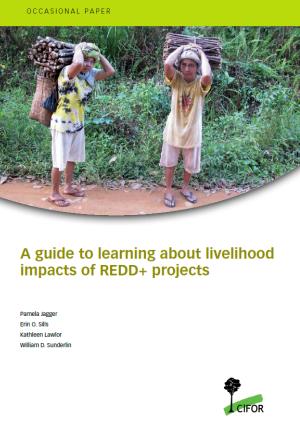
Share
Related Links
"Report: A Guide to Learning About REDD+ (Dec. 2010)
http://www.profor.info/knowledge/social-impact-assessment-forest-carbon-projects...
Attachments
Authors/Partners
Authors: Pamela Jagger, University of North Carolina at Chapel Hill, CIFOR; Erin O. Sills, North Carolina State University, CIFOR; Kathleen Lawlor, University of North Carolina at Chapel Hill; William D. Sunderlin, CIFOR. Partners: The work was supported by Norad, AusAID, DFID, the EU, Finland, the David and Lucile Packard Foundation, PROFOR, USAID and the US Department of Agriculture’s Forest Service.
Maximizing Learning from REDD+ Demonstration Activities (toolkit)
CHALLENGE
Lessons learned from the first generation of sub-national REDD ‘demonstration activities’ will shape the international REDD mechanism’s ability to promote policies and actions that are equitable, effective and efficient. Those lessons will also have a crucial impact on the design of the second generation of REDD strategies and activities. Yet harvesting credible, evidence-based lessons is not as straightforward as it seems.
APPROACH
This knowledge activity was carried out by CIFOR with financial support from PROFOR and other donors. It set out to ensure that first-generation REDD demonstration activities (part of the global process agreed in Bali) would draw on analysis and tools in their design and implementation which maximize learning about how to achieve effectiveness, efficiency and equitability.
RESULTS
This analysis became part of "A guide to learning about livelihood impacts of REDD+ projects" published by CIFOR in December 2010. The report examines the following:
- The case for learning from REDD+
- Counterfactual thinking for learning from REDD+ projects
- Understanding the causal mechanisms that link REDD+ interventions to outcomes
- Practical considerations for understanding the social welfare impacts of REDD+
- Moving ahead with realising REDD+: Guidance for learning about social impacts
The guide provides a unique and integrated method for evaluating the success of REDD+ at the project site level while recognizing that regional and international forces are at play in shaping local outcomes. The guide is accompanied by an executive summary and ten worksheets.
For stories and updates on related activities, follow us on twitter and facebook , or subscribe to our mailing list for regular updates.
Author : Authors: Pamela Jagger, University of North Carolina at Chapel Hill, CIFOR; Erin O. Sills, North Carolina State University, CIFOR; Kathleen Lawlor, University of North Carolina at Chapel Hill; William D. Sunderlin, CIFOR. Partners: The work was supported by Norad, AusAID, DFID, the EU, Finland, the David and Lucile Packard Foundation, PROFOR, USAID and the US Department of Agriculture’s Forest Service.
Last Updated : 06-16-2024
Share
Attachments
Keywords
Authors/Partners
World Bank
West Africa Forest Strategy
CHALLENGE
The Upper Guinea Forest, which covers six West African nations, is being severely threatened by commercial logging, slash-and-burn and plantation agriculture, weak governance, industrial-scale mining, and unsustainable bushmeat hunting. Civil conflict adds a further strain when refugees turn to the forests for shelter and firewood.
At the same time, growing national interest in climate change and forest governance trade initiatives (REDD+, FLEGT) is encouraging radical re-thinking in fields such as timber supply and tree and land tenure. The importance of agriculture, energy security and mining to national growth strategies also has implications for forests, both positive and negative.
Development partners have the opportunity to generalize good practices and build regional capacity to confront the coming challenges in the West-Africa sub-region.
APPROACH
PROFOR supported an effort to analyze the forests sector in five countries (Cote d’Ivoire, Ghana, Guinea (Conakry), Liberia and Sierra Leone) and define elements toward an effective West African forests strategy to ensure conservation and sustainable use of forests, the maintenance of forest ecosystem services, and the fair and equitable allocation of revenues and benefits from forest resources.
RESULTS
"Toward a West African Forests Strategy" was published in draft form in April 2011. It is based on five country studies and a synthesis of regional forests sector issues. Elements from this draft strategy will inform the World Bank's future work on forests for Africa and should be helpful to a variety of development partners and forest stakeholders in defining priority areas of support.
MAIN FINDINGS
Among the country level issues which could benefit from policy support, the report singles out:
- restructuring of forest industry to promote value addition and foster economic growth;
- improving forest governance and public finance management;
- balancing supply and demand issues in export and domestic markets and addressing the issue of ‘illegal’ chainsaw logging;
- support for small and medium forest enterprises and community forestry;
- reforming tree and land tenure so as to favour forest conservation and regeneration;
- reforming revenue sharing arrangements and channelling these so that these provide incentives to farmers and land owners;
- integrating REDD+ and other climate actions into forest policy;
- and improving the sustainability of rural energy (wood fuel & charcoal).
Some of the primarily sub-regional issues identified in the strategy include:
- improving the governance of cross border trade in a context of FLEGT, and helping to harmonize sub-regional trade policies;
- enhancing the geographical information and forest inventory data available for sub-regional policy making and trade controls;
- institutional capacity building to support sub-regional policy coherence;
- investing in the cross-border dimensions of protected area management;
- and developing awareness of the extra-sectoral implications of forest policies across the sub-region.
For stories and updates on related activities, follow us on twitter and facebook , or subscribe to our mailing list for regular updates.
Author : World Bank
Last Updated : 06-16-2024
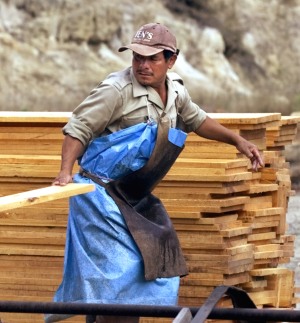
Share
Attachments
RainforestAlliance_Honduras_English_0.pdf
Keywords
Authors/Partners
Rainforest Alliance
Strengthening the Value Chain for Indigenous and Community Forestry Operations
Strengthening the value chain for indigenous and community forestry operations through increased investment and use of technical assistance
CHALLENGE
Spanish versions of the three case studies:
|
The link between sustainable forest management practices and community benefits has not been well documented. Likewise, the connection between the sale of certified products and conservation outcomes is sometimes lost amid general skepticism. Part of the reason investments in community forestry operations are not well understood is that studies tend to rely on anecdotal evidence rather than income and productivity data.
APPROACH
Building on the successful work of the Rainforest Alliance's Sustainable Forestry Division in Mexico and Central America, PROFOR co-financed three case studies documenting changes in income, return on investment and the role of technical assistance in bringing investments to their full potential in Mexico, Guatemala and Honduras.
The case studies are expected to motivate community forestry operations to invest in their operations and strive for improved competitiveness.
MAIN FINDINGS
- In Mexico, with an investment of $1.1 million over three years, the operation increased sawmilling efficiencies and lowered production costs by 43% without sacrificing jobs. A greater focus on secondary processing and investment in their business led to a change in annual profits from minus $561,646 to plus $1.7 million.
- In Guatemala, FSC certified community concessions increased their revenues by 209% to $5.8 million. Improved saw milling efficiencies and higher grades of mahogany along with FSC certified mahogany price increases drove the increase in revenues as did the addition of a FSC certified non-timber product. Employment increased for women though value added processing for non-timber products. Investments by communities themselves have been modest but donor investments in training and technical assistance have probably exceeded $10 million.
- In Honduras, cooperatives banded together to provide semi-processed mahogany for export to certified markets, changing their production chain and adopting sustainable forest management practices. With only a 19% increase in volume harvested, revenues have increased by 128% to $579,375. Actual production costs rose 40% from 2006 to 2008, due to increased costs of forest management and taxes, as well as the extra care needed to produce quality mahogany grades. The cooperatives have invested over $113,000 in simple machinery.
RESULTS
The results of the three case studies were presented at the World Forestry Congress in Buenos Aires, Argentina in October 2009. The Mexico case study was presented at the Expo Forestal in Mexico in September 2009. In both cases, the data on production, efficiency and community benefits was well received.
The indicators used in these cases studies will be useful for measuring impact in other communities. A new forestry project with CONAFOR/UNDP/GEF and the Rainforest Alliance will use the same methodology and variables in Mexico to measure community level impacts on wood harvesting, usage and income. The Rainforest Alliance is also starting two new community forestry projects in Ghana and Cameroon which will use a subset of these variables, adapted for West Africa.
For stories and updates on related activities, follow us on twitter and facebook , or subscribe to our mailing list for regular updates.
Author : Rainforest Alliance
Last Updated : 06-16-2024
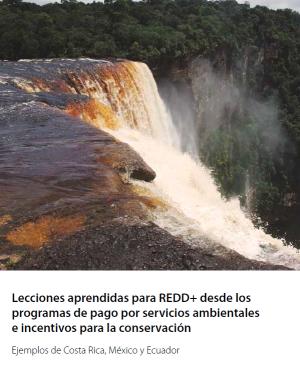
Share
External Related Links
Attachments
PSA en México (dic 2011) (extendida) eng_0.pdf
Presentacion Costa Rica en Durban_0.pdf
PES for REDD+ French version Nov 19_0.pdf
PSALeccionesREDD-June2012_0.pdf
redd+_book_english_final-June2012_0.pdf
Keywords
Authors/Partners
Costa Rica, Ecuador, Mexico, the World Bank (Latin America Caribbean Region, Forest Carbon Partnership Facility, World Bank Institute), Forest Trends, with support from PROFOR.
South-South Learning: From Payments for Environmental Services to REDD+ in Latin America
CHALLENGE
Governments are increasingly aware that REDD+ frameworks will need to include benefit sharing mechanisms that promote social and environmental safeguards while seeking full and effective participation of indigenous peoples and local communities (as stated in UNFCCC Decision 1/CP.16 adopted at COP16 in Cancun in December 2010). How to design and establish REDD+ frameworks and policies in countries while guaranteeing equitable benefit sharing mechanisms and adequate incentives for REDD+ purposes, however, is less clear and a significant challenge for countries trying to get ready for REDD.
APPROACH
The experience of payments for environmental services (PES) systems set up in Costa Rica, Mexico, and Ecuador in the last decade provide valuable inputs for shaping REDD+ strategies in participating countries in the Latin America and Caribbean region. Costa Rica has implemented a nationwide PES program since 1997; Mexico since 2003; Ecuador since 2008. Between them, these programs are currently helping to conserve over 3 million hectares of forests. Their experience shows how to make PES work, but also -- problems to avoid.
This activity supported by PROFOR will help share technical lessons from PES for REDD+ within the context of a South-South learning exchange initially limited to the REDD+ countries in the region.
Although the challenges related to the appropriate design and implementation of REDD+ go beyond those of PES schemes, the PES experience in these three countries could provide insights on many of the core elements of a future REDD+ strategy. The lessons fall into five areas:
1. Participation agreements
2. Equity or social objectives
3. Trade-offs and synergies between multiple (ecosystem) benefits
4. Measuring, reporting and verification (MRV)
5. Sustainable finance and administrative costs
RESULTS
The lessons of payments for environmental services systems set up in Costa Rica, Mexico, and Ecuador were identified and discussed in a participatory fashion, that has gradually created a regional and global community of experts around PES/REDD+ issues.
In the process, participants identified and captured twenty-nine lessons, now available in reports in English, Spanish and French on this page.
Some of the lessons gathered under the header "Sustainable Finance in PES and REDD+" include for example:
- Diversify funding sources and duration of contracts to reduce risks.
- Enable legislative framework to engage the private sector: Use public funding during formulation, preparation and during first phases of implementation, then a combination of incentives/market funds to attract the private sector.
- Clearly define objectives and baselines, and use adaptive management techniques to improve targeting: Avoid if you can “post-modeling” baselines. Try “ex-ante” baselines if you can. Most PES schemes are now “post-modeling” which is costly and not the best choice.
- Explore options to control administration costs: Strengthen current institutions and technical teams instead of setting new ones or depending exclusively on external consultants
The sharing of lessons across borders has helped attract interest from other partners such as FCPF and the World Bank Institute and extended the reach and longevity of these lessons. For example, six webinar sessions co-organized by the World Bank Institute and “Finanzas Carbono” attracted about 1,200 participants.
Through outreach and back to back presentations to the participants committee of the FCPF, the policy board countries of UN REDD, the Partners of the REDD+ Partnership, countries of Forest Eleven and Finanzas Carbono, the activity has reached approximately 54 countries including many countries preparing national REDD+ strategies. Time will tell if countries will make use of PES lessons in the design of their respective REDD+ strategies when they submit their REDD+ preparation plans for evaluation in 2014-16.
For stories and updates on related activities, follow us on twitter and facebook , or subscribe to our mailing list for regular updates.
Author : Costa Rica, Ecuador, Mexico, the World Bank (Latin America Caribbean Region, Forest Carbon Partnership Facility, World Bank Institute), Forest Trends, with support from PROFOR.
Last Updated : 06-16-2024
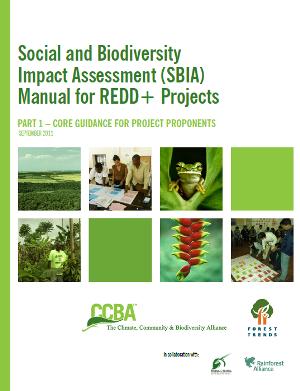
Share
Attachments
Annex 3. CCAH, Peru SIA Case Study 2011_small_0.pdf
Annex 2. GuateCarbon, Guatemala SIA Case Study 2011 Edited_small_0.pdf
Annex 1 Surui Carbon Project SIA Case Study 2011_small_0.pdf
Report on SIA Case Studies for PROFOR_0.pdf
Keywords
Authors/Partners
Authors: Forest Trends'Â Michael Richards and Steve Panfil with key inputs by Nigel Pitman, Steven Price, Natasha Calderwood and Julie Fischer.Partners: Forest Trends and CCBA, with Rainforest Alliance and Fauna & Flora International (FFI).Sponsors: PROFOR, Morgan Stanley, USAID-TransLinks, GEF-UNDP, Rockfeller Foundation and NORAD provided financial support.
Social Impact Assessment of Forest Carbon Projects (toolkit)
CHALLENGE
Are land-based carbon projects good for local people?
Many rural communities are keen to embark on carbon projects as a way of generating income, jobs, and other social benefits. Offset buyers are also attracted to the idea of reducing emissions and simultaneously helping local people. Others are wary that these projects may do more harm than good. However, until recently, there was no clear methodological guidance for carbon project developers to track social and biodiversity impacts. The combination of robust standards for assessing the social performance of projects, and the use of credible methods of social impact assessment could help ensure positive outcomes for local people.
The emphasis in the early years of the carbon markets has been mainly on assuring the integrity of project emission reductions; co-benefits have received much less attention. But the balance is changing, and there are justifiable concerns that co-benefits must, like carbon, be real, ‘additional’ and, as far as possible, measurable. This is partly necessary for market confidence as offset buyers increasingly seek evidence that they are getting what they pay for, including co-benefits. On ethical or equity grounds, carbon projects must at the very least ‘do no harm’ (See related IIED conclusions on REDD+ in the miombo drylands.)
A cost-effective and credible impact assessment toolbox would help carbon project developers meet the verification requirements of the Climate, Community & Biodiversity (CCB) Standards and contribute to building more robust, sustainable projects.
APPROACH
In response to such issues, Forest Trends has formed an alliance with three other NGOs – the Climate, Community and Biodiversity Alliance (CCBA), Rainforest Alliance, and Fauna & Flora International (FFI) – to produce a user-friendly Manual for project proponents on how to conduct cost-effective and credible social impact assessment. Support for this project comes from PROFOR, Morgan Stanley, NORAD, GEF-UNDP, and USAID-Translinks.
The manual is intended for carbon offset project designers and implementers who are not specialists in monitoring and evaluation (M&E).
The Manual was field-tested in 2010 in Brazil, Guatemala and Peru.
RESULTS
Forest Trends released a first version of its manual in June 2010, proceeded to test it in the field (see case studies listed on this page) and solicited feedback. A second version, which integrated biodiversity concerns as well, was released in the fall of 2011 in three parts: a core guidance document and two toolkits (for social and bioversity impact assessments).
Guidance to project developers has been provided by regional training workshops held in Peru (June 2010), Tanzania (October 2010), Kenya (August 2011 with GEF-UNDP funding) and DRC (September 2011 with USAID-Translinks funding). This has resulted in training of approximately 80 terrestrial carbon project developers and other REDD+ stakeholders from about 10 countries. These workshops involved hands-on training using ‘real’ REDD+ projects as case studies over a period of 3-4 days.
In Tanzania, the Tropical Forest Conservation Group (TFCG) REDD project in Lindi District has undertaken a large scale SIA exercise in 2011 following their participation in the SIA Training workshop in Zanzibar in October 2010.
FINDINGS
Experience during field testing and further training in social impact assessment shows that the benefits of using the ‘theory of change’ approach to impact assessment go well beyond the generation of a credible social monitoring plan which can meet the CCB or other multiple benefit standards. These wider benefits include: strategic project design necessary for achieving social and biodiversity objectives (clear objectives are essential for identifying monitoring indicators); participation of project stakeholders; promotion of adaptive project management; and the ease of understanding and explaining the results to a range of stakeholders.
Keys to better participation of local stakeholders include the quality of the ‘focal issue working group’ facilitators (so the latter need to be more carefully selected and trained); some prior training or exposure for community participants; the use of a ‘practice activity’ to develop good practice consultation skills; and various issues around the more effective participation of local stakeholders, especially women.
Based partly on the costs in the three case studies, the authors estimate that the cost of generating a credible social monitoring plan using their approach will be in the range $25,000-35,000 depending on various factors.
For stories and updates on related activities, follow us on twitter and facebook , or subscribe to our mailing list for regular updates.
Author : Authors: Forest Trends'Â Michael Richards and Steve Panfil with key inputs by Nigel Pitman, Steven Price, Natasha Calderwood and Julie Fischer.Partners: Forest Trends and CCBA, with Rainforest Alliance and Fauna & Flora International (FFI).Sponsors: PROFOR, Morgan Stanley, USAID-TransLinks, GEF-UNDP, Rockfeller Foundation and NORAD provided financial support.
Last Updated : 06-16-2024
Share
Related Links
Attachments
Keywords
Searching for Viable Alternatives to Secure Basis for the Financial Sustainability of Forests
A Country Lead Initiative (CLI) in support of the UNFF -- 2005
PROFOR sponsored an initiative led by Costa Rica - "Innovative Financial Mechanisms: Searching for Viable Alternatives to Secure Basis for the Financial Sustainability of Forests" - in support of the 5th United Nations Forum on Forests (UNFF5).
The CLI worskshop took place in San Jose, Costa Rica, from March 29 - April 1, 2005 and comprised three working days and a field trip to sites where participants learned about payments for environmental services.
For stories and updates on related activities, follow us on twitter and facebook , or subscribe to our mailing list for regular updates.
Last Updated : 06-16-2024








